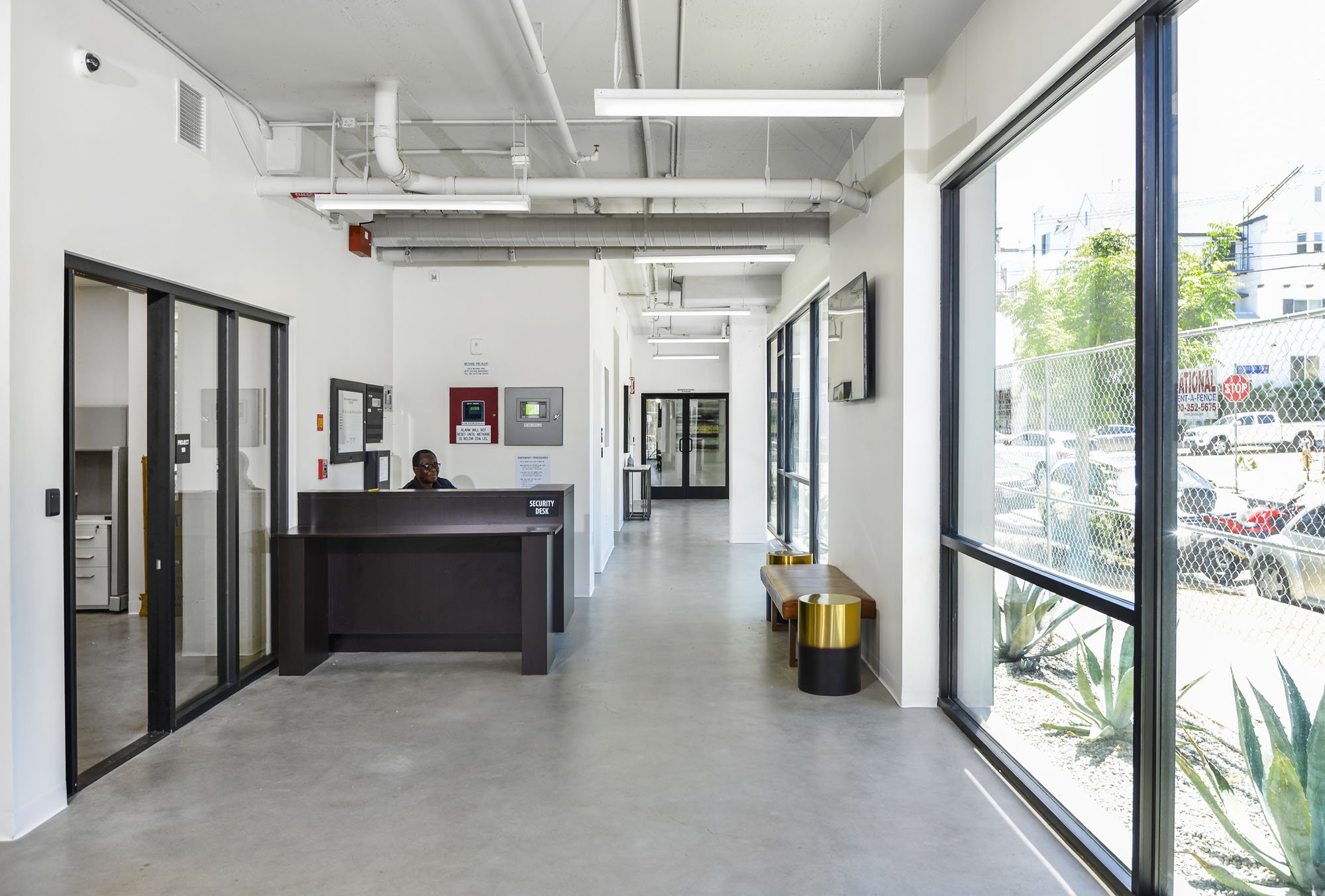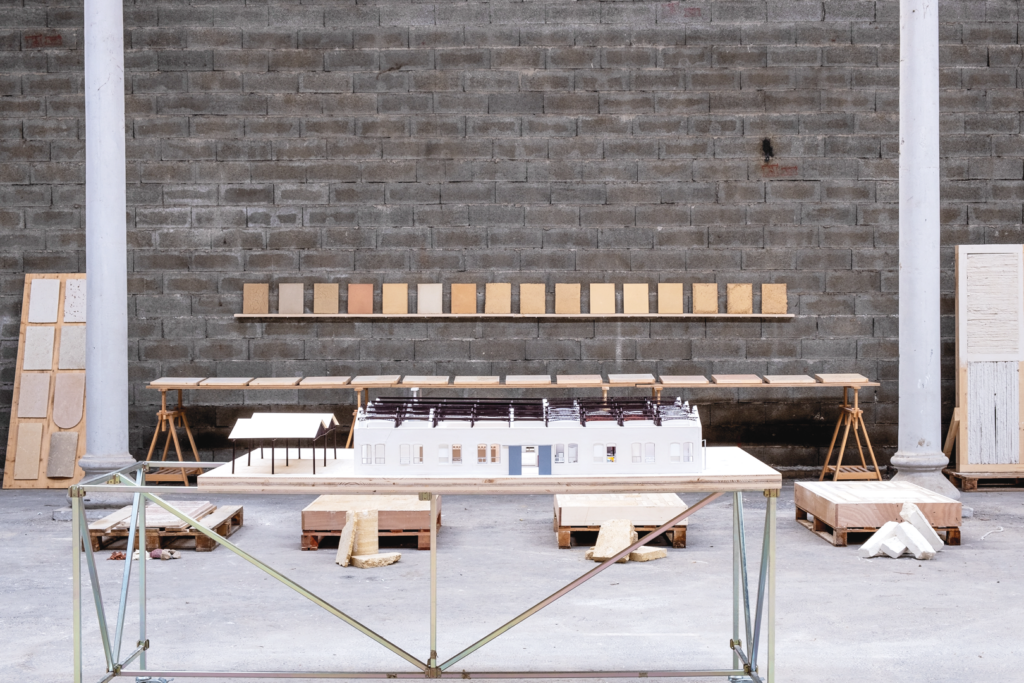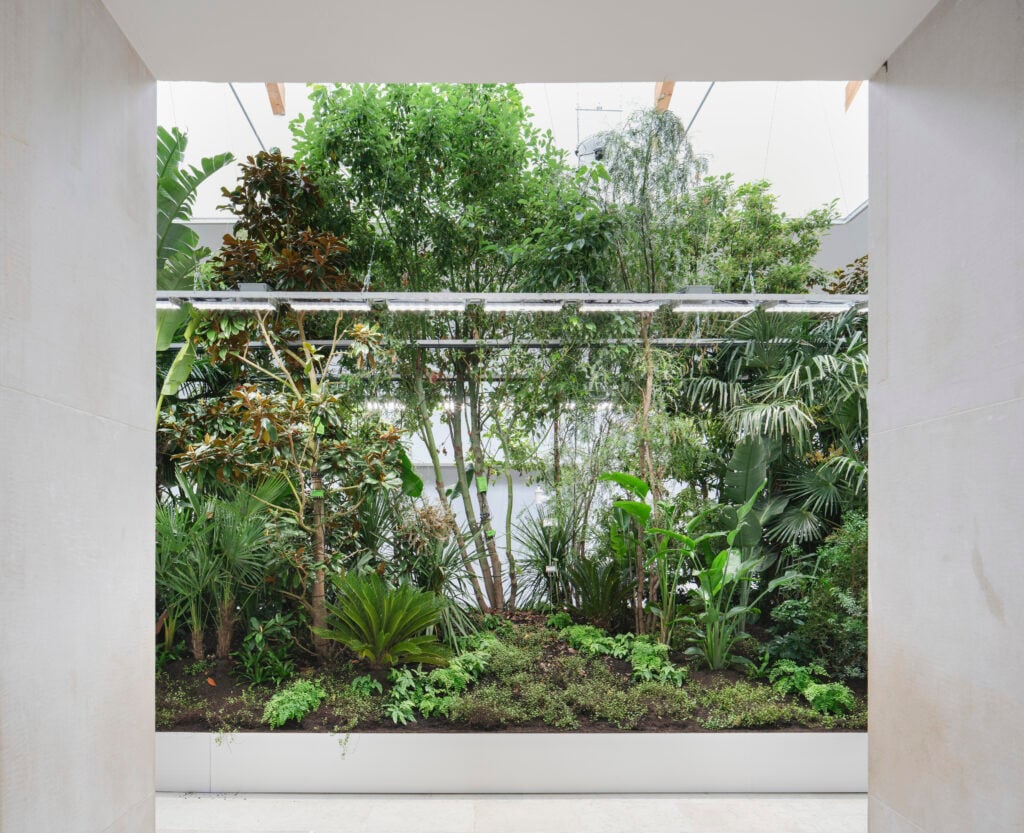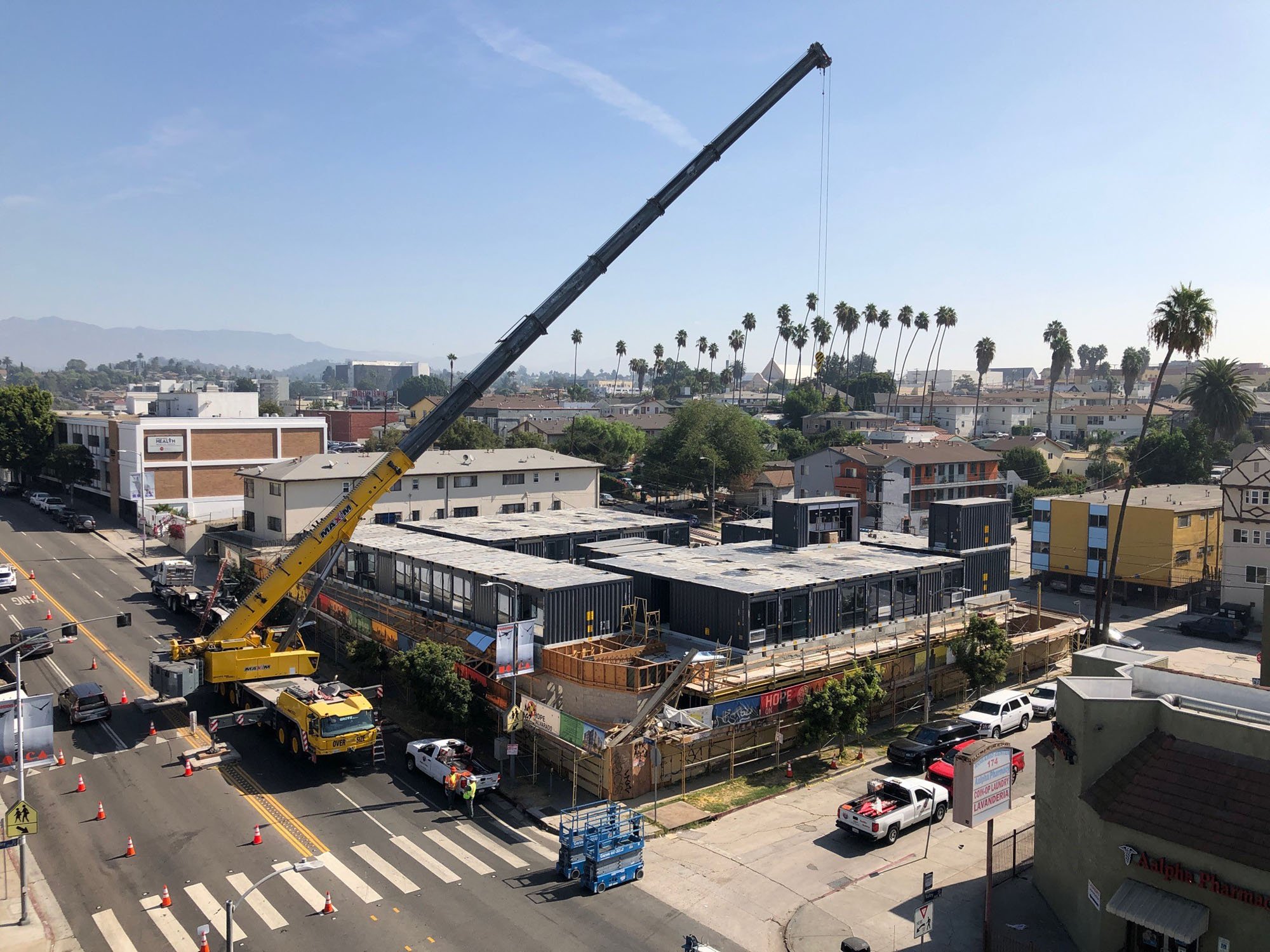
October 21, 2022
A Los Angeles Firm Uses Modular Construction to Create Truly Affordable Housing
A “drop and lock” method allows the majority of parts to be fabricated off-site, before being installed and finished at each property.
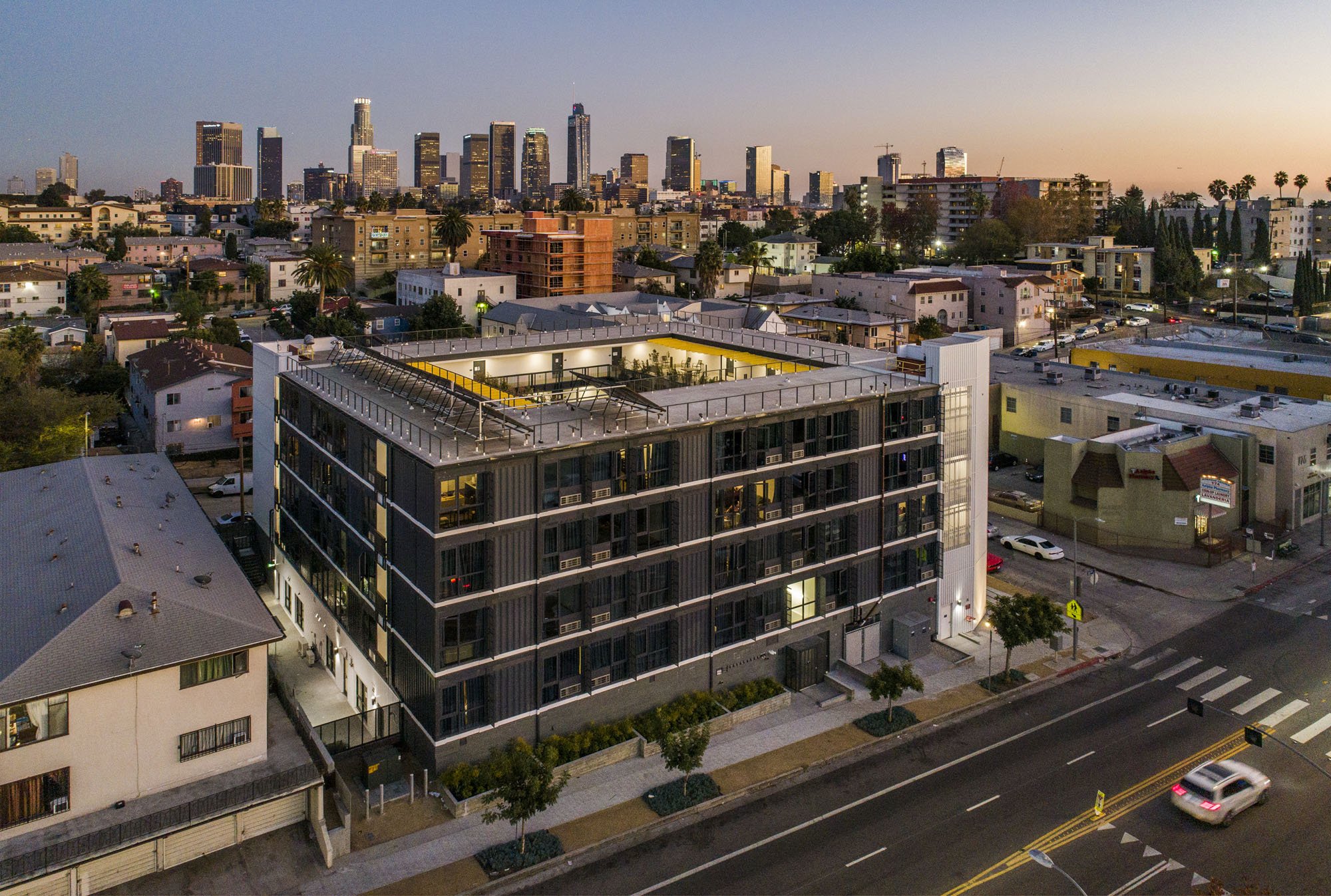
At Hope on Alvarado, a “drop and lock” method allows the majority of parts to be fabricated off-site before being installed and finished at the property, where a site-built concrete podium supports the steel modules. “This is basically built like a commercial building, with steel stud infill and so forth,” says KTGY Principal Mark Oberholzer while walking through the ground floor lobby. Typical processes then stop there. Windows, kitchen and bathroom features, and finishes for the units are manufactured both domestically and abroad, and transported by truck before being directly craned into place.
Hope on Alvarado in L.A.’s Westlake neighborhood is organized around a central courtyard plan, with 84 studio or one-bedroom, fully furnished units placed along double-loaded corridors. Residents’ amenities include a community room, bike storage, and a shaded and landscaped rooftop deck at the fifth floor. Given the learning curve here, the effort reached “cost parity” with average affordable housing construction costs, which are higher than market-rate housing due to prevailing wage agreements and other regulatory factors, Oberholzer explains. But time is money. “One of the main wins is the time of the build,” he says, given that on-site and off-site construction are parallel tracked.
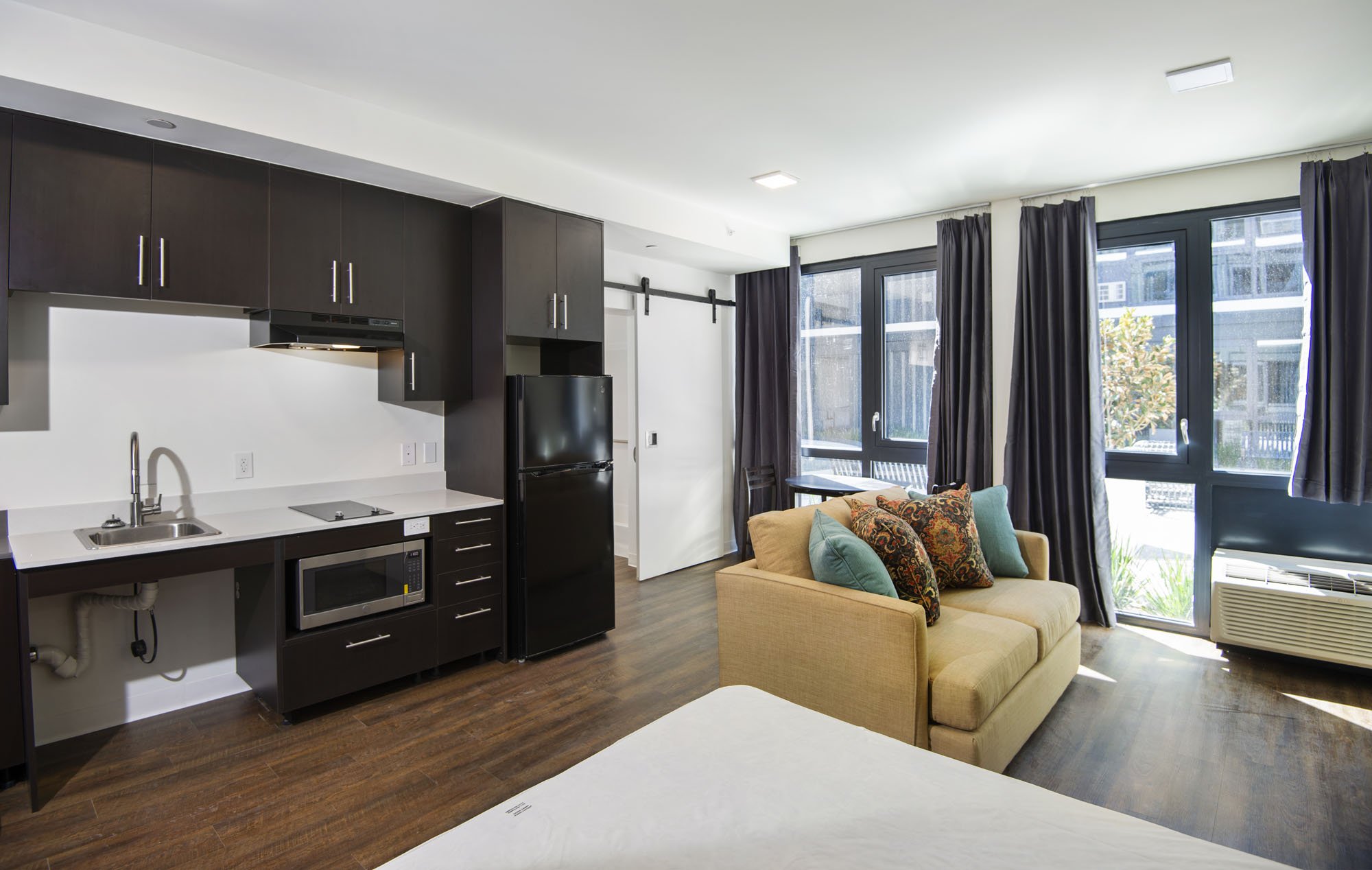
In this case, the building’s corrugated steel exterior elements are a deliberate choice and a nod of sorts to popular shipping container prefab aesthetics. These components are newly sourced and adapted to each project, however. “We have been intentionally customizing” each modular housing project, Oberholzer notes. Even with these projects’ rectilinearity and streamline processes, “everything gets not repeated, based on how you adapt to the site.” Expansive interior windows at Hope on Alvarado emphasize visual connectivity, in addition to providing ample natural light, while allowing for privacy. The street-facing elevation, which also contains generous spans of fenestration, is purposefully “rough around the edges,” he says. “You can see the welds and everything is kind of exposed” to emphasize the practical industrial materiality that contrasts with board-formed concrete details. Fixed vertical screens add dimension and shading to the west-facing facade that fronts Alvarado. This feature is also essential, given that the building’s position directly welcomes Southern California sunlight that intensifies during afternoon and evening hours.
In addition to the aforementioned Hope projects, some of which are partially funded through Proposition HHH, KTGY’s innovations in the field of modular architecture are promising vis-a-vis wider impacts. The firm has designed modular multifamily projects in Orange County, Pasadena, and Koreatown with other development partners. “I think we learned a lot during construction and fabrication,” Oberholzer says about Hope on Alvarado. “Then unlike most lessons you learn in life, we’re getting to actually apply those lessons.”
Would you like to comment on this article? Send your thoughts to: [email protected]
Latest
Viewpoints
Sustainability News Updates for Q2 2025
Renewable energy growth, carbon benchmarking, and circular design strategies shaping the built environment.
Viewpoints
Meet the Changemakers Shaping Tomorrow’s Buildings
METROPOLIS’s 2025 Spring Issue spotlights designers and architects going the extra mile, redefining what it means to design for climate, community, and lasting impact.
Viewpoints
Venice Architecture Biennale 2025: In Defense of Speculation
In Defense of Speculation At the 19th Venice Architecture Biennale, seven exhibitions demonstrate the importance of conceptual ideation, especially in advancing rigorous sustainability



